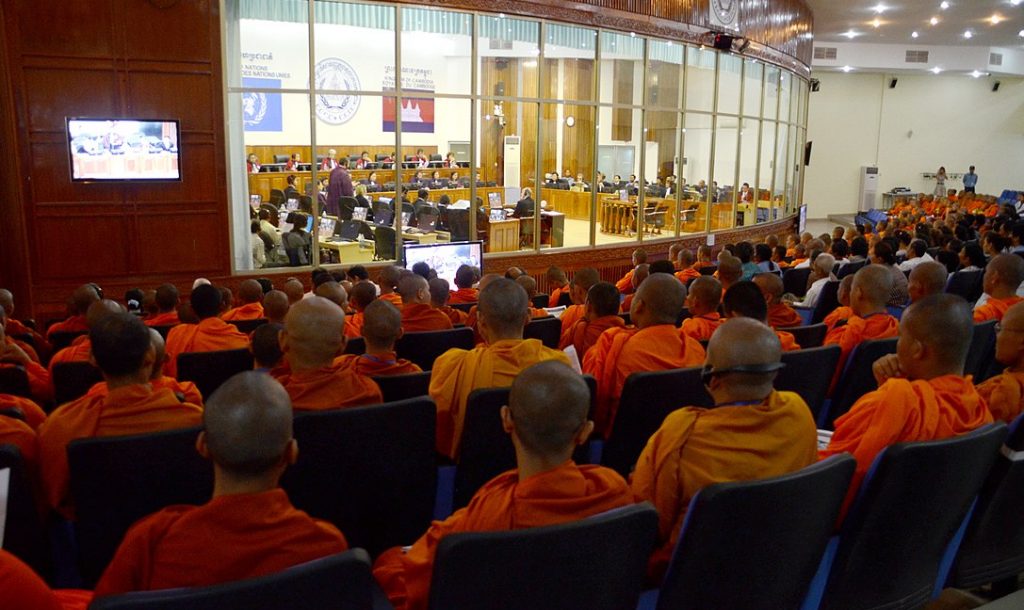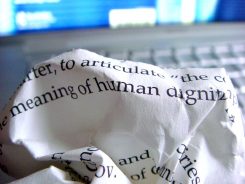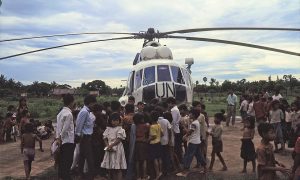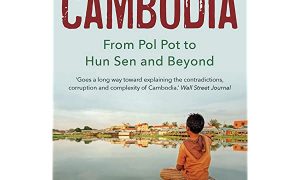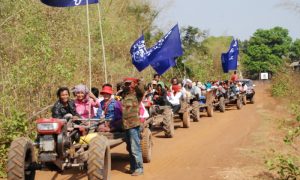Human dignity is often framed as a foundational human rights concept; yet, despite its centrality to international human rights and development frameworks, the boundaries of its meaning remain contested, with a range of conceptualisations persisting across diverse cultures and contexts. These contestations, and what they mean for human rights and development projects and policies in practice, form the subject of the research project ‘Locating “Human Dignity” in Cambodia.’ What are the possibilities and challenges of integrating the concept of “human dignity” into human rights curricula in Cambodia’s law schools? Our work in developing a pilot resource in this area provides some insights.
Since human dignity is foundational to the international human rights framework, it is unsurprising to find it emerge as a growing theme in the discourse around human rights education. Our review of relevant human rights education literature, curricula, and policy found that “human dignity” is framed in three ways:
As a principle of human rights education, “human dignity” influences the UN Declaration on ‘Human Rights Education and Training’, which requires human rights education to ‘be based on the principles of equality…human dignity, inclusion and non-discrimination’ (Article 5), while the Council of Europe’s ‘Manual for Human Rights Education with Young People’ stipulates that human rights education activities should ‘be such that dignity and equality are an inherent part of the practice.’
“Human dignity” is a goal of human rights education, which has been identified as a means of both developing ‘the human personality and sense of dignity’ and teaching students ‘to treat a person with dignity and participate in making the community of dignified persons’. It also appears in the Council of Europe’s definition of human rights education as ‘educational programmes and activities that focus on promoting equality in human dignity’.
Significant differences arise around how “human dignity” is defined and protected, and what it requires of states, non-state institutions and citizens.
“Human dignity” in Cambodian law, policy and civil society advocacy
Within human rights education curricula, educational activities which centre on, or include discussion on “human dignity” demonstrate how human dignity can act as a tool to help develop understanding of human rights. For example, the UN’s “‘ABC: Teaching Human Rights’” guide, the Zurich University of Teacher Education’s “Living Democracy” project, and the World Youth Alliance’s “Human Dignity Curriculum” all contain lessons which utilise “human dignity”. These curricula have been adopted around the world, while at a domestic level further examples can be found in China, Thailand, and South Africa, among others.
These discussions around the role of “human dignity” in human rights education overlap with other debates in human rights discourse, including debates about how “universal concepts of rights” can be taught in diverse educational contexts around the world, how human rights can be “translated” into local contexts, and the role of “intermediaries” such as NGO workers, lawyers, and academics in “refashion[ing] global rights agendas for local contexts.” In our research, we found several examples of “localised” human rights curricula that engaged with “human dignity” through culturally relevant scenarios and concepts, including in Namibia, where “ubuntu” was used as a framework for exploring ideas which resonated with human rights, and India, where the caste system was used to raise questions about dignity and discrimination.
Against this backdrop, our project seeks to understand the possibilities and challenges of integrating a “localised” concept of “‘human dignity” into human rights education in Cambodia’s higher education system, in particular its law schools.
Dialogue with human rights educators in Cambodia raised the possibility that “human dignity” might provide a useful tool through which to discuss and promote foundational human rights values in a politically sensitive climate where they have become increasingly associated with political opposition to the dominant Cambodian People’s Party. This makes human rights education increasingly delicate and challenging for educators. Yet, in such a context it is arguably even more valuable for future lawyers and legal practitioners to further their understanding of the underpinning principles of human rights.
Over the last eighteen months, members of our team interviewed and conducted focus groups with human rights educators from around Cambodia. They also held focus groups and trial teaching sessions with law students in Phnom Penh, using locally relevant case studies such as the controversial “Draft Law on Public Order” to explore “human dignity” and its relationship to human rights.
Two key findings emerged. First, we found that while educators highlighted the potential importance of the “human dignity” concept in human rights education, more teaching resources were required. For example, one educator noted that the concept “is really very much in need of explanation. If we don’t understand, we cannot teach others and [may] make them even more confused”. Another suggested: “[i]f you can publish a book and state the general terms, the principles for an individual to have dignity…legal conditions or traditional legal conditions, it would be easy for me to teach.”
Second, we found that using case studies as an entry point sparked animated conversations around how “human dignity” and other human rights concepts were understood in Cambodia. In trial classes, students engaged in discussion on the gendered dimensions of dignity, resonance with Khmer social values, Buddhist concepts, and rights and responsibilities more broadly. For example, during a discussion based on a case study on the theme of the dignity of the dead, one student mentioned that a traditional funeral with Buddhist rituals should still be arranged, “because it is the last chance for them to listen to various chant and dharmas according to the tradition that we, Cambodians, have to prepare…The funeral is a good deed and dignity for all of us.”
On the value of the case study approach, one student noted that “I can gain some additional knowledge related to case analysis and increase knowledge about dignity and human rights to another level…Through the discussion, it gave me new knowledge from all of you, and all of you also received new knowledge from me.” Educators also reflected positively on the ways that engagement with “human dignity” could inform their teaching practice. For example, at a workshop with Cambodian educators in May 2022, one participant noted that talking about “human dignity” made them feel more confident in their ability teach human rights and foundational human rights concepts, as it provoked deeper reflections on what these concepts meant.
Centring human dignity in the human rights curriculum: a case study approach?
This initial research suggests that there is an appetite for additional resources on “human dignity”, and that a case study approach might provide one way in which to introduce the concept in a legal education context. Over the past months, we have been designing teaching materials for four sessions on “human dignity” that can be adapted to suit existing human rights law courses in Cambodia. Importantly, our goal is not to promote any particular definition of human dignity. As we have previously explored, “human dignity” has multiple, diverse and contested meanings, and our project is designed to question rather than reinforce uncritical assumptions of universality. Instead, the materials encourage reflection on the concept and allow students to work towards an understanding of its role as a foundation of human rights.
Drawing on our field research and experience of teaching through case studies, the materials include several case studies drawn from relevant bodies and institutions of law. Reflecting on the importance of “localisation”, we use the Extraordinary Chambers in the Courts of Cambodia to introduce students to “human dignity” in the context of international humanitarian law, as well as domestic legislation. Other case studies are drawn from international human rights bodies such as the African Court of Human Rights and European Court of Human Rights.
In each case study, students are provided with the facts of the case and the role that “human dignity” played in the judgment, before being asked to consider discussion questions that aim to foster reflection on the concept’s meaning and purpose in that context. We hope that the use of diverse case studies will promote a ‘bottom-up’ approach, where students can reflect on the conceptual boundaries of “human dignity” in different contexts. In this way, our hope is that “human dignity” may act as a helpful entry point through which to reflect on human rights, both as an international framework and as something relevant to Cambodia. The following months will involve seeking feedback from students and educators alike, in an attempt to gather more information about how centring “human dignity” can facilitate discussion and the promotion of foundational human rights values in Cambodia’s politically sensitive climate.
The article draws from the two-year research project titled, ‘Locating ‘Human Dignity’ in Cambodia’. This project is a collaboration between the Centre for the Study of Humanitarian Law in Phnom Penh, Queen’s University Belfast and the University of Sydney Law School. It is funded by the British Academy Humanities and Social Sciences Tackling Global Challenges Fund, grant number: TGC\200177. For further information contact Dr Rachel Killean at [email protected]. You can access our research briefs in English and Khmer and read more about the project here.
 Facebook
Facebook  Twitter
Twitter  Soundcloud
Soundcloud  Youtube
Youtube  Rss
Rss 